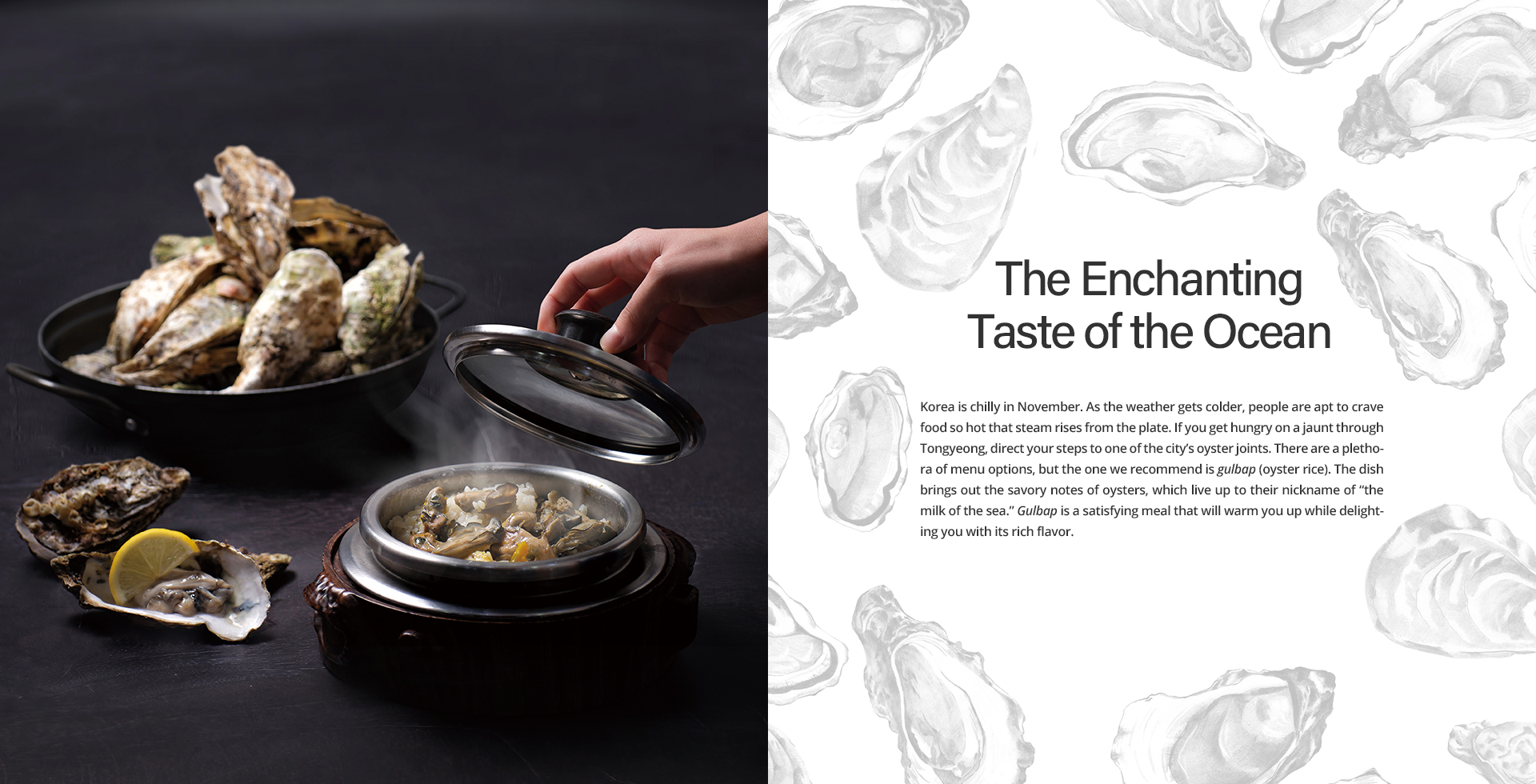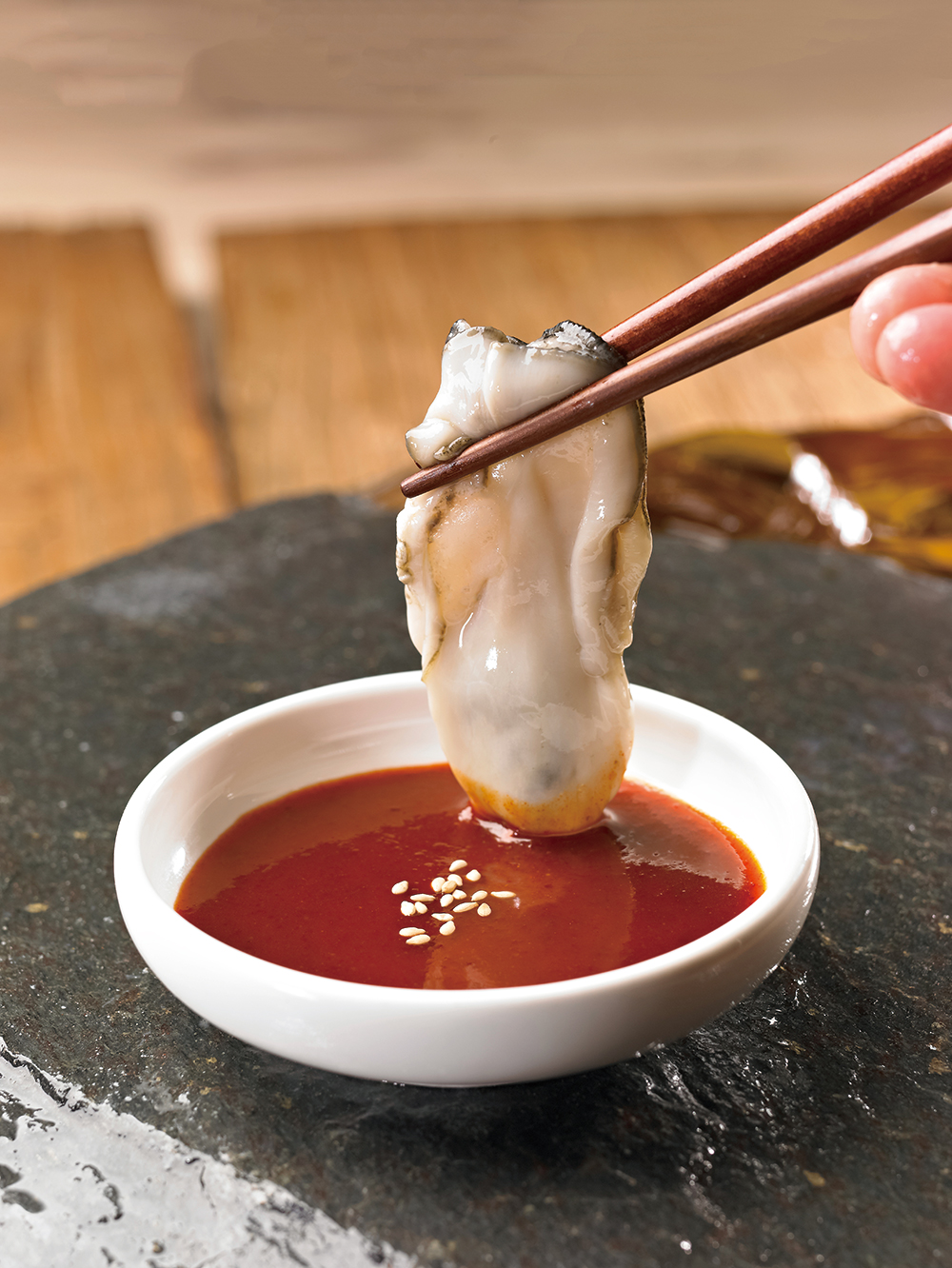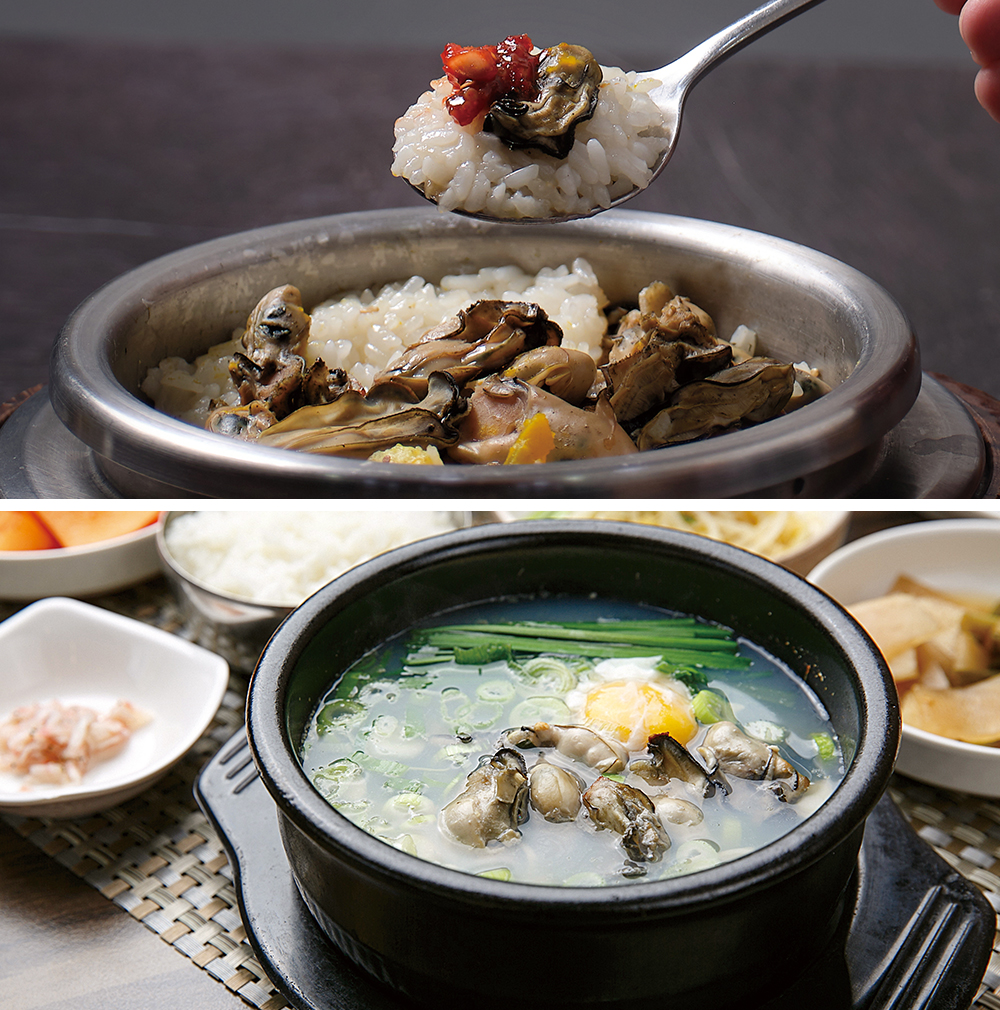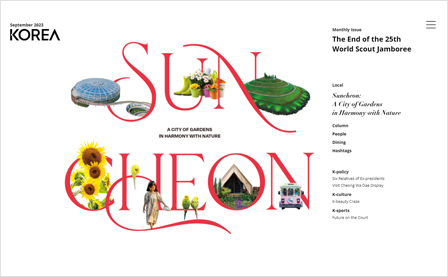November 2023

Local
Dining


Gift from Ocean
Oysters have high concentrations of iron and magnesium, which are excellent at preventing anemia. Oysters are full of taurine, which helps with hangovers and fatigue, along with zinc and glycogen, which can boost stamina. They’re also chock-full of a range of vitamins and nutrients including iodine, phosphorus and selenium.
Tongyeong is famous for its oysters. In fact, 80% of Korea’s oysters are produced in this city. The waters around Tongyeong are in an oceanic climate, which means they’re warm in the winter and cool in the summer―an environment where plankton thrives. And where plankton is in abundance, the conditions are ripe for oyster farming. In addition, Tongyeong’s oysters are farmed using the hanging method of aquaculture. In this method, young oysters are attached to scallops or oyster shells and allowed to grow. This aquaculture method was first adopted off the southern coast of Korea in the 1960s and remains in use today. As a result, large amounts of fresh oysters are grown in Tongyeong, and visitors can chow down on high-quality oysters at affordable prices.
Gulbap is a dish that brings out the full flavor of oysters. It’s made with a range of ingredients―chestnuts, sweet pumpkin, ginkgo nuts, jujubes and walnuts―that are rested on well-rinsed rice, which is then topped with oysters and steamed. When you remove the lid from the stone pot, you’re greeted by a rush of different aromas―the sweetness of the rice, the ocean tang of the oysters and the earthy notes of the nuts and vegetables. After savoring that fragrance, spoon the gulbap onto an empty plate. Then before the scorched rice on the bottom of the pot (called nurungji) can cool, pour in some of the sungnyung (scorched rice water) served with your meal and close the lid. The hot water softens the nurungji, making a hearty porridge. Stir the sauce into the gulbap on your plate to taste and take a bite. The plump oysters have an enchanting flavor, fresh but not fishy, as well as a delightfully chewy mouthfeel. The nurungji porridge in the stone pot is the final touch of a perfect meal.

When eating raw oysters, they are typically dipped in chogochujang (sweet and sour red chili paste). © Gettyimages Korea
A Feast of Oysters
If you’ve already tried gulbap, we also recommend gulgukbap (oyster and rice soup). This dish is based on gulguk (oyster soup), which is made by boiling daikon radish, soybean sprouts and oysters in a broth of anchovies, green onion roots and kelp. The clear broth glistens a faint white, and the flavor is just as exquisite.
Adding rice (bap) to the gulguk gives you gulgukbap. The bracing flavor of the broth and soybean sprouts complements the rich flavor of the oysters to keep you coming back for more. Kimchi and eggs can be added to the soup if desired. This rice-and-soup combination is easy to swallow, and a single bowl is a full meal. It will warm your body and settle your stomach, making this a great choice for when a chill is coming on.
If you’re curious about other kinds of oyster dishes, you may want to order guljeongsik, a full-course meal that lets you try a wide variety of the dishes. The spread is likely to include guljeon, pan-fried batter oyster with zucchinis, carrots and eggs; gultangsuyuk, fried oysters drizzled with a sweet-and-sour sauce; and gulmuchim, oyster salad with vegetables and red pepper powder. And since those dishes are all served with either gulbap or gulgukbap, it’s your best bet for sampling all the oyster cuisine that Tongyeong has to offer.

(Top) Gulbap pairs well with the spicy and savory jeotgal (salted seafood) that comes with it.
(Bottom) Gulgukbap has a more harmonious flavor when seasoned with saeujeot (salted shrimp).
 View of all
View of all






